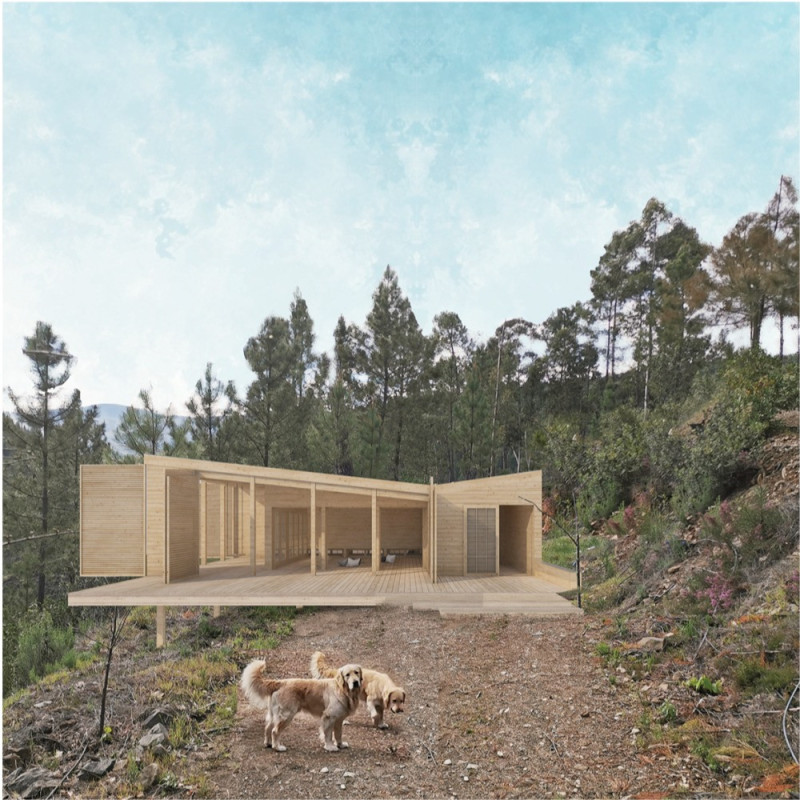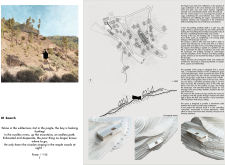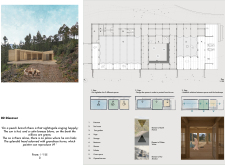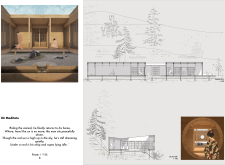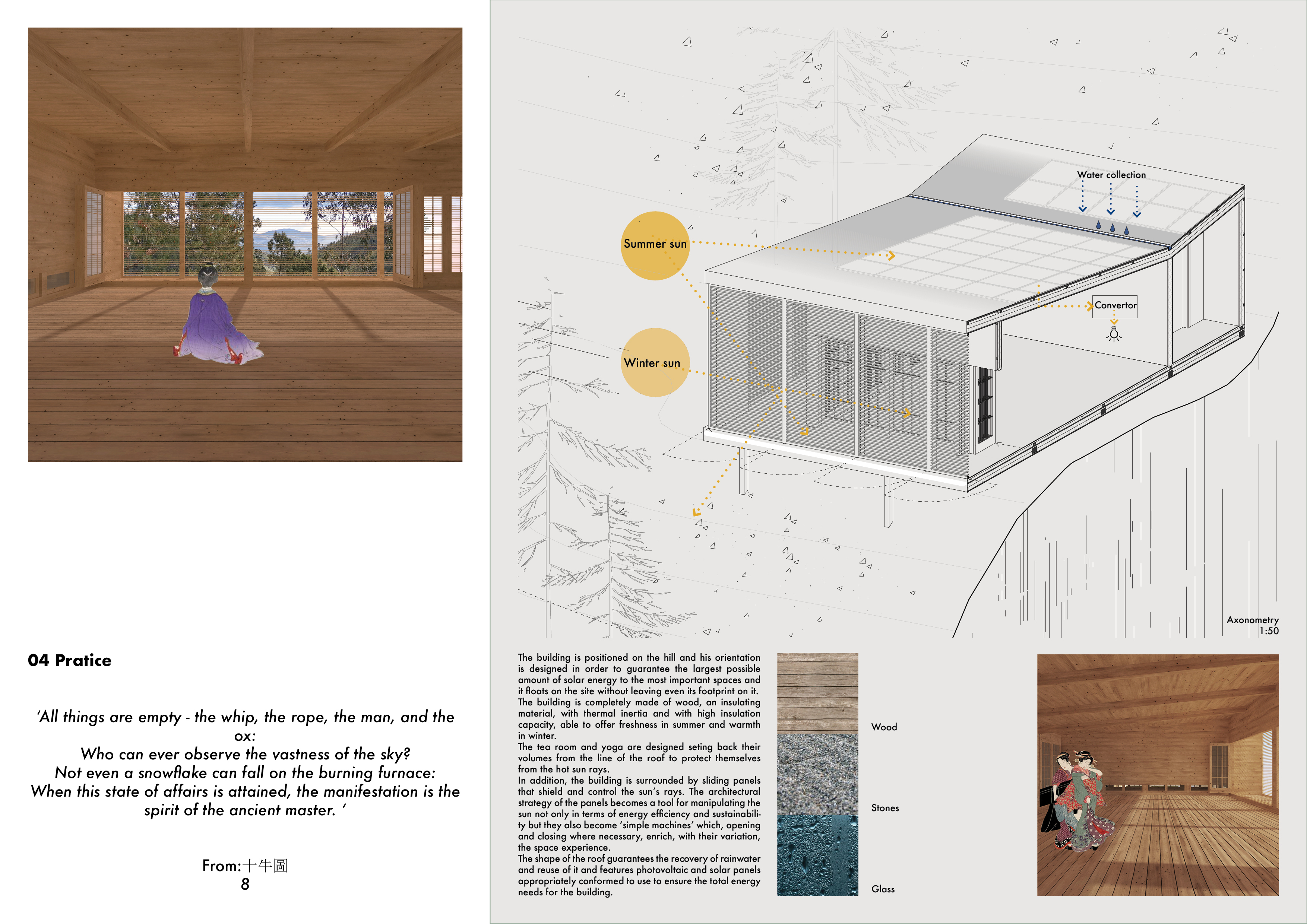5 key facts about this project
The project is situated on a hill, chosen for its ability to capture solar energy while minimizing its ecological footprint. The elevated position allows the building to create a visual connection with the landscape, giving it a floating appearance. The design focuses on sustainability and user comfort, aiming for a balanced relationship between the built environment and nature, providing a peaceful setting for those who use it.
Key Spaces and Functions
The design includes two main areas: a tea room and a yoga space, both intended to enhance the experience of users. These rooms are set back from the roof line to reduce the impact of direct sunlight, allowing natural light to illuminate the interiors without causing discomfort. Large windows invite views of the exterior, encouraging users to engage with the landscape and fostering a connection to the outdoors.
Adaptive Architectural Elements
Surrounding the structure are innovative sliding panels, which serve multiple functions. These panels provide shade and privacy, allowing users to adjust their environment based on their needs. This feature adds flexibility to the design, enabling individuals to respond to changing light conditions throughout the day. By incorporating these movable elements, the project enhances the relationship between users and their surroundings, allowing for a personalized experience.
Sustainability and Materials
Wood serves as the primary material in the project, chosen for its insulating properties and sustainability. This material helps improve energy efficiency, stabilizing the indoor climate by providing cooling during the summer and warmth in winter. The roof is designed to collect and reuse rainwater, and it also includes photovoltaic and solar panels, highlighting a commitment to renewable energy practices.
Design Detail
A notable aspect of the roof design is the way it directs rainwater toward collection points, combining functionality with visual interest. The form of the roof adds character to the building while ensuring sustainable resource management. This thoughtful integration enhances the overall approach to both architecture and environment.


